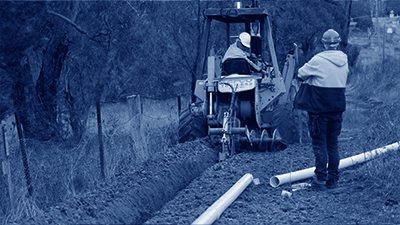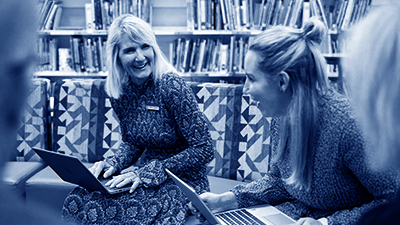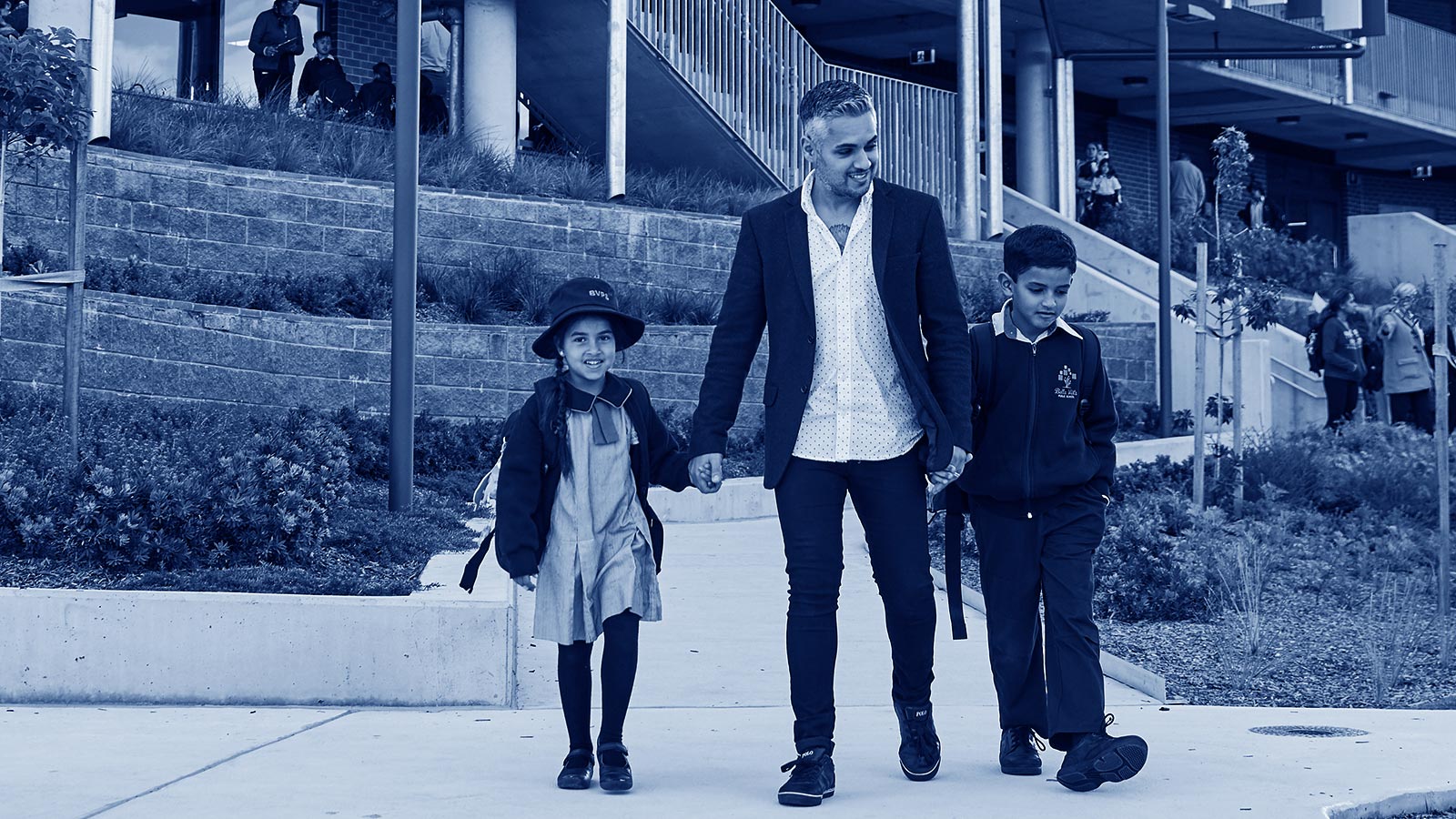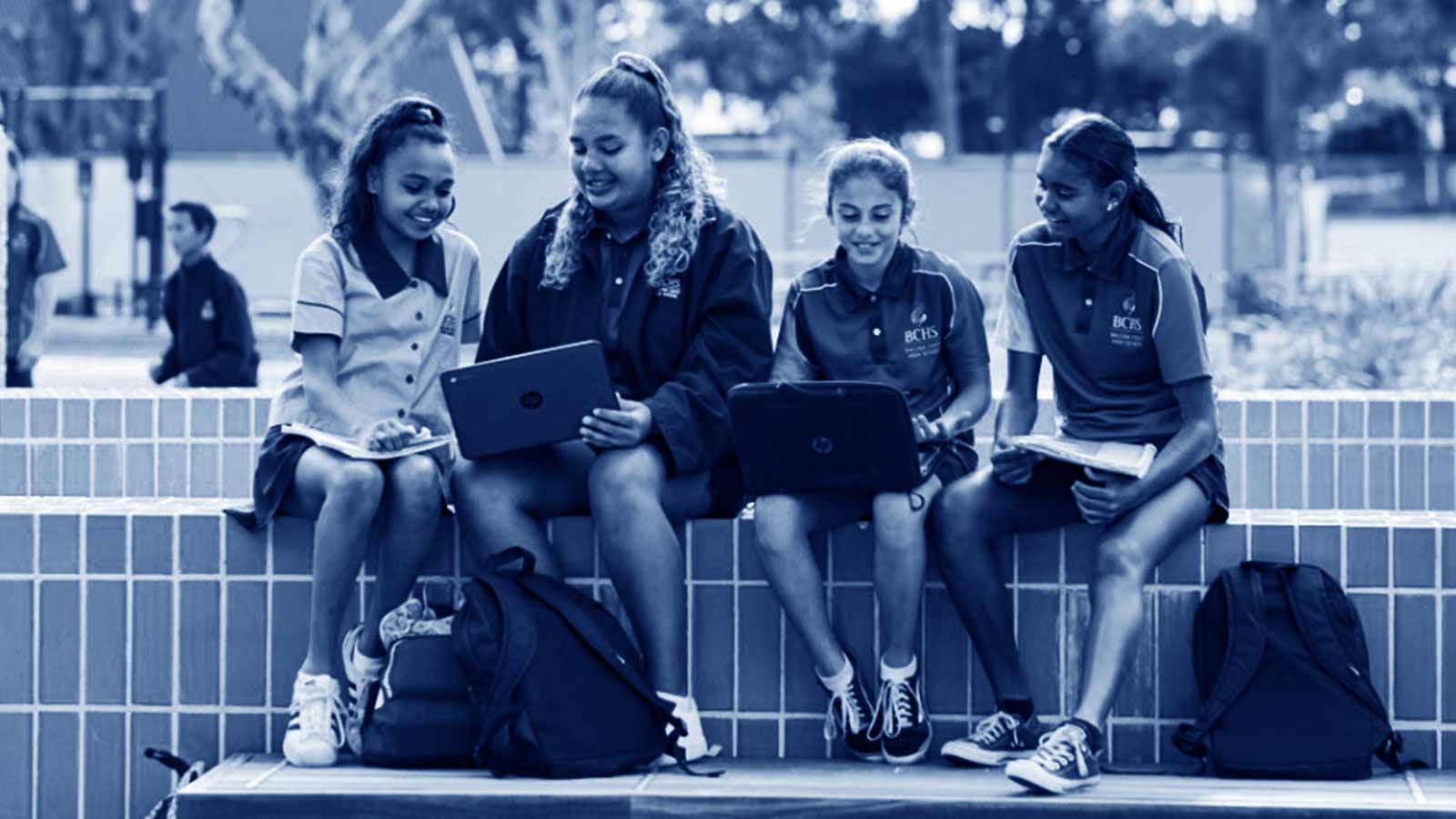This is the transcript of the 'program delivery' video.
Voiceover:
The Rural Access Gap program was designed to provide rural, regional and remote schools with improved connectivity, more devices and tools and valuable support, ensuring all students have equal opportunity no matter where they live.
Dan van Velthuizen, Principal, Warialda Public School:
That equity puts the kids on a level playing field because they haven't had that previously.
Voiceover:
This was made possible with funding by the Digital Restart Fund.
Wayne Poole, Program Director, Rural Access Gap program:
This investment has made a huge difference for our rural and remote schools.
Dan van Velthuizen, Principal, Warialda Public School:
There is a big difference between a metropolitan student and a country kid.
Voiceover:
To cater to each school's unique priorities and needs, Digital Action Plans were developed and teachers appointed as Digital Classroom Officers to support the implementation of technology in the classroom.
Bec Newham, Digital Classroom Officer, Rylstone Public School:
Actual human resources on the ground, in schools; experienced teachers who can show other teachers, ‘Here's a way you can do this’.
Darryl Thompson, Principal, Wellington Public School:
They've got a lot of credibility amongst the staff, so staff are happy to have them in classrooms or talk to them about what really matters.
Tina Legg, Digital Classroom Officer, Wellington Public School:
It really extended my knowledge and opened my eyes to a whole world of ways of using technology in the classroom that I hadn't thought about before.
Voiceover:
With this tailored support, schools have been able to onboard new technologies, develop digital programming and transform the way they deliver teaching and learning to suit their local context.
Daniel Rattigan, Principal, Finigan School of Distance Education:
An amazing asset across all of our schools in the Queanbeyan network.
Voiceover:
It has improved the way students and teachers connect and collaborate through digital classrooms.
Georgie Lowe, High School Teacher, Ulladulla High School:
There’s stuff that we can design collaboratively when we connect to a Google doc and we're both researching things – it’s awesome.
Voiceover:
Making daily tasks easier for our support staff and improving communication with parents and carers was also a program priority.
Amanda Hupp, SAM, Dubbo West Public School:
We can communicate directly with parents, at the click of a button, and it's an instant response that we can get from our parents.
Voiceover:
Parents can now complete forms and make payments online, reducing the administration burden for school support staff.
Louise Rodgers, SCASS, Urunga Public School:
To have the most up to date, fastest and easiest ways to do it is vital for our job.
Dan van Velthuizen, Principal, Warialda Public School:
This support that we're getting from the department by way of the Rural Access Gap
is really helping us no end with that.
Voiceover:
The insights and lessons learned throughout the program will feed future programs and initiatives as we continue to improve digital equity across our schools in New South Wales.
Bec Newham, Digital Classroom Officer, Rylstone Public School:
It is making a difference and I can see the difference in the teachers and, mostly, I can see the difference in the students, which is what we're here for.
[End of transcript]
Creating a level playing field
The Rural Access Gap program was the first stage of the Schools Digital Strategy that ensured these schools were digitally transformed to match their metropolitan counterparts.
Program Director Wayne Poole said it was more than just a technology uplift for students and teachers.
"It's about providing equal opportunity to rural and remote students," he said. "It's about putting them on the same digital footpath as the other students and giving them the same opportunity. I'm really passionate about that side of the work."
Key outcomes for rural schools
The program covered 200,000-plus students across more than 1,000 rural, remote and regional schools delivering on four key areas:
- Leading digital improvements by giving leaders the tools to better understand their school’s digital maturity and invest in skills development.
- Enabling digital classrooms through upgrades to connectivity and learning spaces, and leveraging cloud technology.
- Accessing digital tools to support teachers and students for a more customised education experience.
- Making daily tasks easier by automating school management systems, and streamlining communication to parents and carers.


View an interactive map of program schools including name, location and release (staff only).
School outcomes and impact
Rural and remote schools have already benefitted from stronger, more responsive and reliable distance education platforms, quality and accessible teaching resources, expert digital support and training, and a reduction in administrative burden.

Fast, secure connectivity
Fast, reliable and secure internet connectivity was delivered as part of a multi-million dollar infrastructure upgrade of rural and remote schools.

More devices for teachers
More than 18,000 teachers across more than 1,000 schools now have access to a portable device to help them build digital skills and streamline lesson planning.

Digital Maturity Planner
The planner helped schools understand their current level of digital maturity, identify gaps, and help build and manage a plan that lifts their digital capabilities.

NSW Education Parent App
The NSW Education Parent App streamlined communication with features such as push notifications to your phone so you never miss any important news or events.

Digital Classroom Officer
The Digital Classroom Officer (DCO) program created more than 1,000 DCO roles improving teacher confidence in using digital tools and delivering better student outcomes.

Universal Resources Hub
The Universal Resources Hub provided a central place for teaching and school-based staff to access and share quality-assured resources.